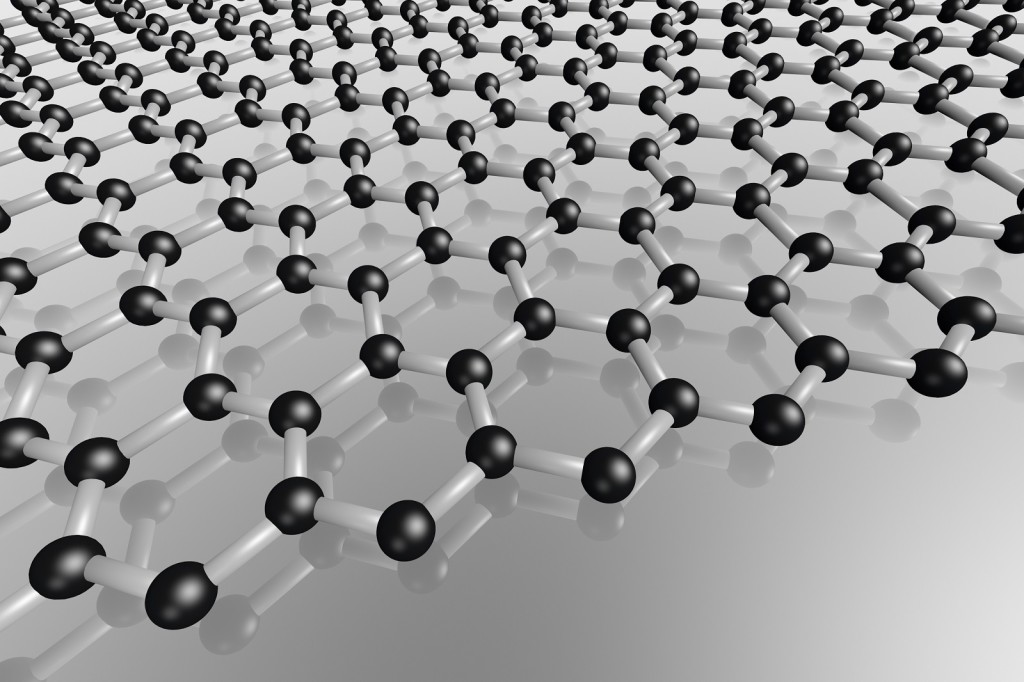Graphene, a material for the future
10 years after the discovery of this revolutionary material by the two Russian researchers (Andre Geim and Kostya Novoselov, for which they won the Nobel Prize in 2010), the graphene is still the ‘only material in two dimensions, the thinnest ever created (in addition to being the most resistant) and obtainable from the same material it is made of a tip of pencil, graphite.

source: econewsweb.it
For some time we talk about Graphene, but now it seems that something is happening for real.
10 years after the discovery of this revolutionary material by the two Russian researchers (Andre Geim and Kostya Novoselov, for which they won the Nobel Prize in 2010), the graphene is still the ‘only material in two dimensions, the thinnest ever created (in addition to being the most resistant) and obtainable from the same material it is made of a tip of pencil, graphite.
But, how the two researchers obtained these thin layers of graphene?
They took a graphite block and used a tape to remove small fragments of the mineral. Repeating the operation several times on the same fragments and pressing the adhesive tape on a silicon substrate, it was possible to obtain very thin layers, some of which, examined with a solution of sulfuric and nitric acid, showed a thickness of a single atom, or the same size that we get if we divide the section of a human hair 10,000 parties.
What is the use of Graphene?
“I dont know. It ‘s like to submit a piece of plastic to a man than a century ago and ask what you can do. A bit ‘of everything, I think “
Andre Geim
These are some of the many properties of graphene:
- Mechanical strength 50 times higher than that of ‘steel;
- More than twice the thermal conductivity of the diamond;
- Density equal to half of ‘aluminum, and so dense that not even the’ helium, the smallest gas atom, can pass through it;
- High acquiescence, or the ability to be shaped at will for any use without the risk of breaking it;
- Resistant to changes in temperature and pH.
Some of the fields of application of this material…
- The “Massachusetts Institute of Technology” in the United States has carried out an experiment in reverse osmosis with graphene, reaching excellent results. The molecular structure of graphene allows you to create any size of the holes on its surface and for this reason it was possible to pass the ‘pure water on one side and salts from’ other. There ‘s nothing new in this experiment, only with the’ use of this material will be possible to have much smaller equipment, an energy cost equal to almost zero water filtration and water purification.
- The combination of its mechanical properties with electric ones they can be used in electronics flexible and foldable, with the creation of devices that fold back on themselves, that you can roll up or put on your wrist. The electrons can travel in this material with a speed close to that of light, making it the replacement of copper in our computer. It is on this street, Intel and IBM are investigating solutions to solve the problem related to the technologies in silicon which, although superior to any other, they produce a high amount of heat. Graphene, therefore, for its outstanding thermal properties could solve these problems. In addition, the exceptional mobility of the charges, accompanied by appropriate architectural solutions, may allow the realization of ultra-low power transistors for portable applications such as mobile phones or PDAs, which could be recharged once a month, rather than at intervals of a few days, besides the fact that the batteries of mobile phones will be able to charge much more rapidly (it is estimated at around 15 minutes).
- New solar panels are lighter and will be fully biocompatible carbon. Will be eliminated so the most fragile and expensive made with indium-tin oxide, a material that is more and more difficult in our planet. There will also be more efficient, easier to recycle and consist of two solar cells sandwiched between two layers of graphene. The light passes through the graphene layers and hits the photovoltaic cell, with the result of generating electricity which is then transported from the graphene.
- Its use must be from aviation (aircraft so lightweight that consume little fuel) to sports.
What are the costs?
The ‘international interest is too large, so that the’ European Union has financed one billion euro project to bring it on the market.
Various techniques have been developed for the production of graphene, but at the moment there is no effective and inexpensive method for obtaining large sheets. It is estimated that the cost to produce one kilogram of graphene are around 30-35,000 Euros.
